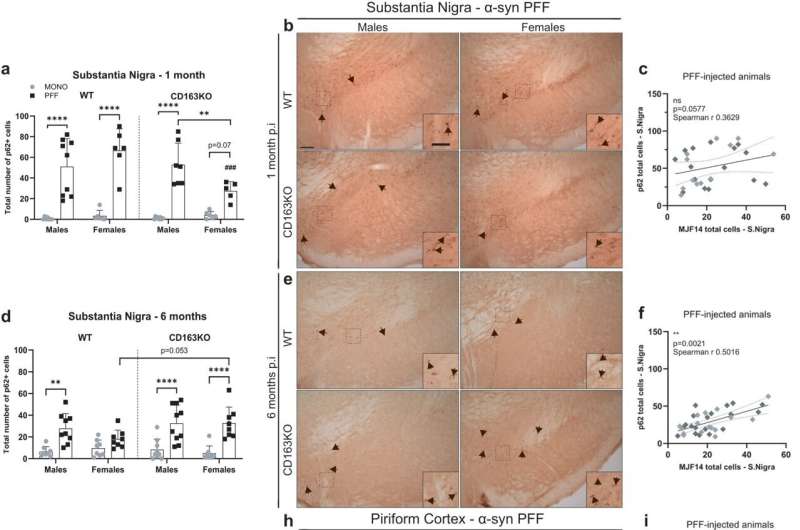This article has been reviewed according to Science X's editorial process and policies. Editors have highlighted the following attributes while ensuring the content's credibility:
fact-checked
peer-reviewed publication
trusted source
proofread
A newly discovered receptor appears to protect against Parkinson's disease—but only in females

More men than women are diagnosed with Parkinson's disease. The reason why is still followed by a big question mark, but the sex difference is nonetheless a growing area of interest for researchers.
Now, a group of researchers from Aarhus University, led by Professor Marina Romero-Ramos, might have found one of the pieces to this puzzle.
In an article recently published in npj Parkinson's Disease, the researchers shed light on a specific receptor called CD163, a protein expressed mainly in blood-immune phagocytic cells. The protein is involved in the immune response during the neurodegenerative process associated with the aggregation of a-synuclein in Parkinson's disease, and it seems to play a specific and protective role in the body's defense against the damages related to the disease.
"Our study suggests that CD163 is involved in the mechanism controlling the entrance of lymphocytes in the brain during neurodegeneration," Romero-Ramos explains.
Most interestingly, the protein seems to exert a neuroprotective role particularly relevant in females.
The findings thus add new insight into the sex difference related to Parkinson's disease and suggest that some of the answers might be expressed in the body's protection system.
"We believe that the sex differences observed in the risk to develop PD, higher in males, as well as the disparities in the disease presentation between sexes might be due to differences in the immune response," Romero-Ramos explains.
This study provides evidence that the increased expression of CD163 in patients with Parkinson's disease might be a compensatory mechanism aiming at the protection of neurons—especially in females. Romero-Ramos hopes that the study will increase research focus on both the immune system and the involvement of sex differences in the disease
More information: Sara A. Ferreira et al, Sex-dimorphic neuroprotective effect of CD163 in an α-synuclein mouse model of Parkinson's disease, npj Parkinson's Disease (2023). DOI: 10.1038/s41531-023-00606-w


















